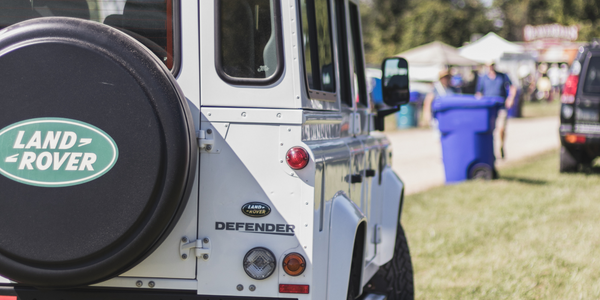公司规模
Large Corporate
地区
- Africa
- Asia
国家
- India
- Kenya
产品
- Domo BI & Analytics
技术栈
- Data Visualization
- ETL Pipelines
实施规模
- Enterprise-wide Deployment
影响指标
- Productivity Improvements
- Environmental Impact Reduction
技术
- 分析与建模 - 实时分析
适用功能
- 物流运输
- 销售与市场营销
用例
- 供应链可见性(SCV)
- 实时定位系统 (RTLS)
服务
- 数据科学服务
- 云规划/设计/实施服务
关于客户
KOKO Networks 是一家高科技公司,正在扩展专有技术平台,以保护非洲森林免受破坏性的木炭烹饪燃料行业的破坏。该公司的硬件、软件和操作平台能够大规模地用可持续的生物乙醇烹饪燃料替代木炭——从肯尼亚城市开始。每天有超过 50 万户家庭通过 1,300 多台 KOKO 燃料 ATM 网络购买清洁燃料,这些燃料由智能微型油罐车加气。客户体验现代、清洁、超安全,并且比木炭价格低 40%。自 2019 年第四季度在内罗毕推出以来,KOKO 实现了快速增长,在肯尼亚和印度拥有一支 1,500 人的强大团队(截至 2022 年 8 月)。
挑战
KOKO Networks 是一家正在扩展专有技术平台以保护非洲森林免受木炭烹饪燃料行业破坏的公司,其数据可视化软件面临挑战。该公司正在处理来自三个不同数据库的大量数据,这导致仪表板速度和性能出现问题。随着公司的快速发展,它需要一个易于使用且新团队成员可以快速采用的解决方案。此外,该解决方案需要价格合理且易于分析部门管理。
解决方案
KOKO Networks 实施了 Domo 的 BI & Analytics 产品,以管理其网络中可再生燃料的最后一英里配送。使用传感器通知 Domo 仪表板,燃料在整个运营过程中得到跟踪,从每个使用的储油站和“微型油罐车”开始,直到到达广泛的 KOKO Point“燃料 ATM”网络。同样,从 KOKO 仓库运送炊具和罐子也可以更有效地跟踪,同时可以更好地了解客户指标(例如燃料购买)。这种数据可见性的提高使 KOKO 的效率达到了新的水平。管理团队可以监督高级仪表板,以监控整体销售业绩、增长数字和预测。在支持方面,团队成员可以深入研究仪表板以提取数据并执行自己的分析。最后,客户销售团队每小时自动接收数据,以显示现场的活畜水平。这样做的总体目标是使业务民主化,以确保每个人都可以独立访问最终数据。
运营影响
数量效益

Case Study missing?
Start adding your own!
Register with your work email and create a new case study profile for your business.
相关案例.

Case Study
Remote Temperature Monitoring of Perishable Goods Saves Money
RMONI was facing temperature monitoring challenges in a cold chain business. A cold chain must be established and maintained to ensure goods have been properly refrigerated during every step of the process, making temperature monitoring a critical business function. Manual registration practice can be very costly, labor intensive and prone to mistakes.

Case Study
Leading Tools Manufacturer Transforms Operations with IoT
Stanley Black & Decker required transparency of real-time overall equipment effectiveness and line productivity to reduce production line change over time.The goal was to to improve production to schedule, reduce actual labor costs and understanding the effects of shift changes and resource shifts from line to line.

Case Study
Jaguar Land Rover Speeds Order-to-Cash Cycle
At Jaguar Land Rover, vehicles physically move around the facility for testing, configuration setting, rework and rectification, leading to a longer search time to get each vehicle to its next process facility. The main goal is to minimize the vehicles' dwell time between end of line and the delivery chain which was previously a manually intensive process. Jaguar Land Rover's goal was to build on the success of an earlier RFID project and improve the efficiency of delivering vehicles to meet dealer orders.

Case Study
Retail Uses RFID to Enable Cold Chain Monitoring
Like most grocery retailers, Hy-Vee is faced with the challenge of providing the highest quality products to its shoppers. Shoppers want the longest possible shelf life from perishable products and expect a consistent product experience each time they shop. Controlling the quality of products sold leads to shopper loyalty, which is of paramount importance to the success of Hy-Vee. Before products arrive in stores, Hy-Vee's distribution centers (DCs) handle items including dairy products, fresh meats, seafood, deli items, produce and frozen goods, all of which have different temperature needs and sensitivities. During transit from suppliers to DCs, Hy-Vee has limited visibility and temperature management abilities due to large amount of supplier managed transportation. For instance, during a week-long transit, a supplier's carrier equipment may malfunction, causing an item to thaw and then refreeze once repairs are made. Hy-Vee sought help from TempTRIP, an RFID solution provider that focuses on shipping, storage, receiving, and temperature control. TempTRIP's EPC RFID tags use Impinj chips to monitor and report temperature readings throughout the shipping and receiving process. The tags can also be re-configured and re-used, a unique feature within the current market of temperature monitoring devices.









